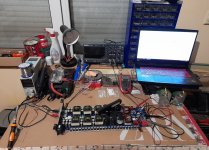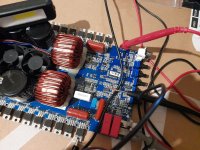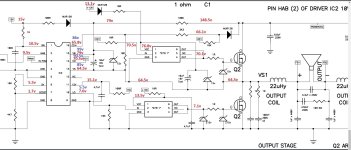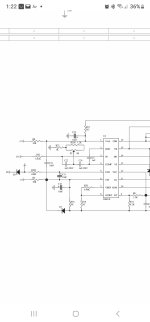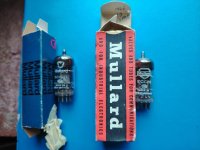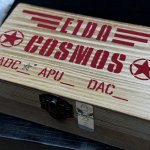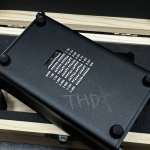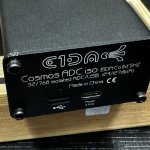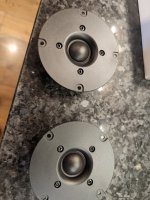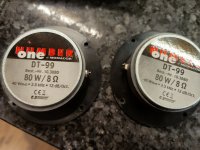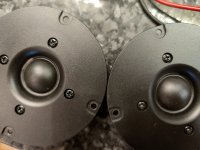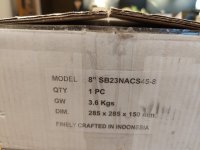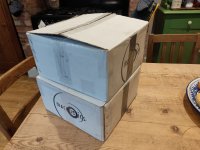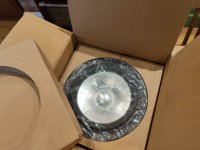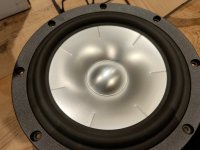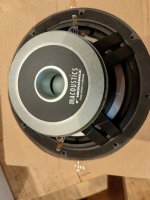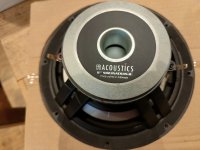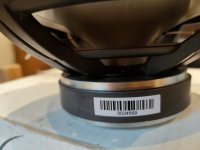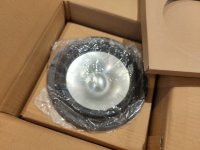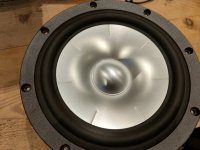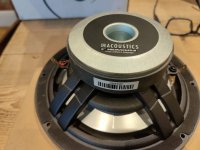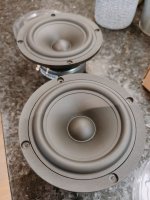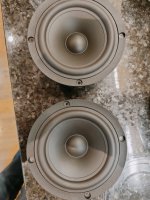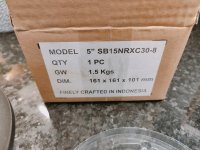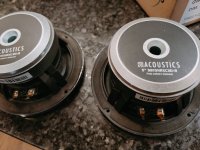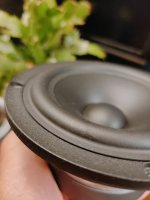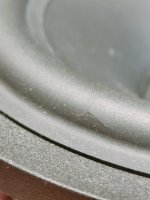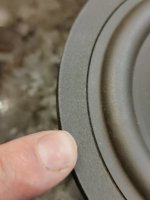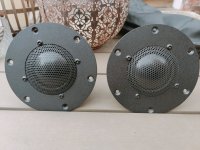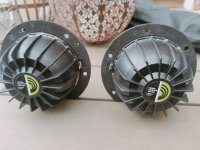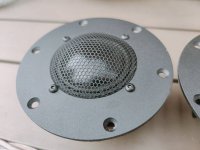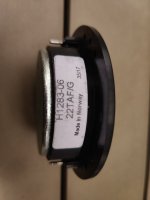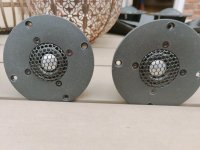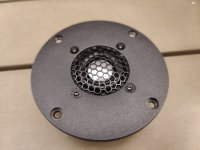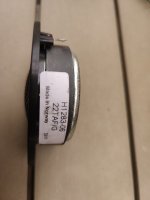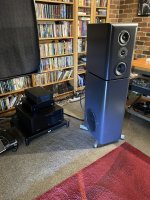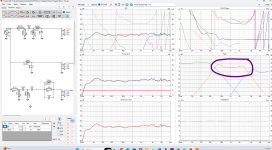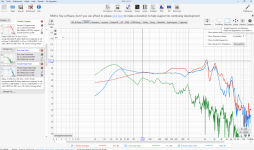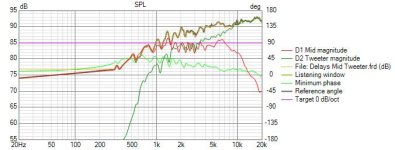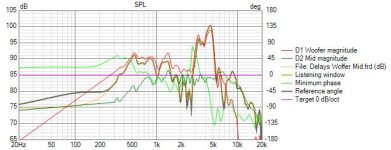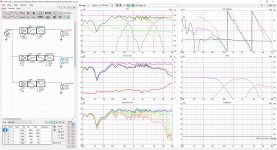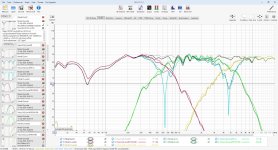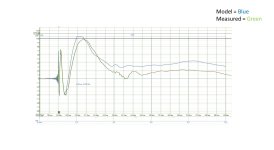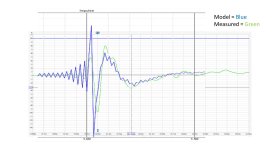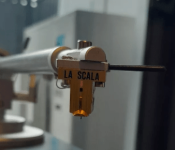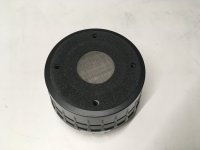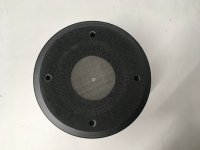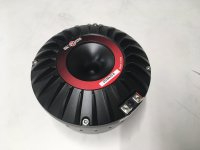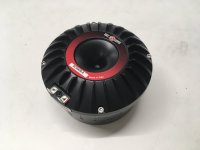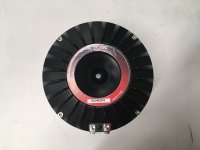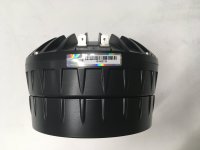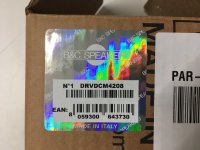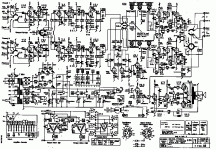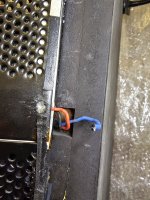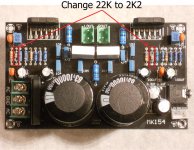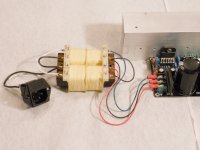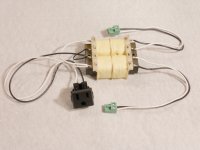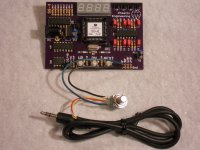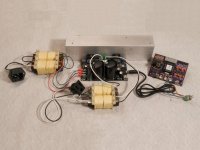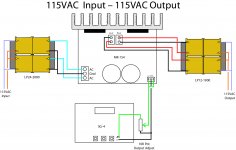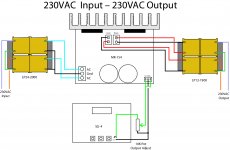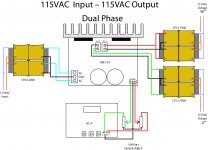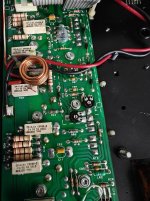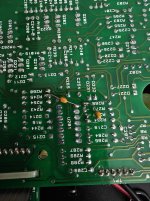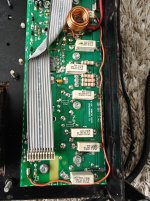GZCA 12K-SPL DC offset
Really long story....in short
Amp came in with blown up capacitors in the class D output filtering, the ones 1uf 400v between the output terminals and ground. 10ohm 5W resistor was in bad condition too.
Replaced those.
Amp now has DC offset of approximately 20v which can NOT be fixed by the trim pot, it can fix only 1-2-3volts of difference not more. It plays, no protect, class D switching is present, but as You can imagine having 20v DC on a speaker = not good.
Seems like one of the amplifiers, in RED (it is full bridge class D) works with 20v-21v LESS than the other one in BLUE. These are the only differences I found between both amps driver IC's, pictures are attached. What I understand....when having a 150v rail, there should be aprox. 75v at each output terminal....now I do have 85v at the one and 65v at the other....not good. Connecting a load does not change the DC offset. How to fix this disbalance ?
One of the amps in this full bridge, the one in RED, with less voltage present, the low side outputs are warming up. 1 minutes of idle = 60-70degrees, high side stays normal/cool.
So i've put my effort in this RED "amp" where the heating up is happening, I do use the other one BLUE "amp" as a reference as it's not heating up.
What i've replaced so far - IRS20957s, both buffers (the 6 pin drivers), all of the 15v zeners, all of the MUR120 diodes, all the resistors near the driver/buffer, IC, zeners, all of output transistors. Parts are from reputable source. So even after changing all of this, there is NO single difference. It is exactly behaving the way it was before doing any work at it.
Any ideas ?
I will attached some of my draft measures.
Amp came in with blown up capacitors in the class D output filtering, the ones 1uf 400v between the output terminals and ground. 10ohm 5W resistor was in bad condition too.
Replaced those.
Amp now has DC offset of approximately 20v which can NOT be fixed by the trim pot, it can fix only 1-2-3volts of difference not more. It plays, no protect, class D switching is present, but as You can imagine having 20v DC on a speaker = not good.
Seems like one of the amplifiers, in RED (it is full bridge class D) works with 20v-21v LESS than the other one in BLUE. These are the only differences I found between both amps driver IC's, pictures are attached. What I understand....when having a 150v rail, there should be aprox. 75v at each output terminal....now I do have 85v at the one and 65v at the other....not good. Connecting a load does not change the DC offset. How to fix this disbalance ?
One of the amps in this full bridge, the one in RED, with less voltage present, the low side outputs are warming up. 1 minutes of idle = 60-70degrees, high side stays normal/cool.
So i've put my effort in this RED "amp" where the heating up is happening, I do use the other one BLUE "amp" as a reference as it's not heating up.
What i've replaced so far - IRS20957s, both buffers (the 6 pin drivers), all of the 15v zeners, all of the MUR120 diodes, all the resistors near the driver/buffer, IC, zeners, all of output transistors. Parts are from reputable source. So even after changing all of this, there is NO single difference. It is exactly behaving the way it was before doing any work at it.
Any ideas ?
I will attached some of my draft measures.
